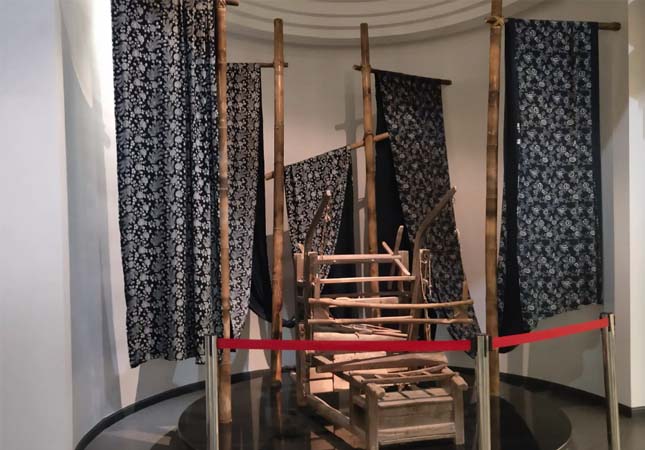Textile has been closely related to people's life since ancient time,now in modern life, all kinds of machines used for textile such as “jacquard machine”have also obtained unprecedented technological development under background of science development. The origin of Chinese wool textile technology can be dated back to ancient China as early as primitive age. The archaeological excavations failed to find woolen fabrics of earlier age because this kind of fabrics are not easy to preserve underground. However, some woolen fabric fragments have been unearthed at the late Muhong primitive society site in Dulan, Qinghai, the warp density of them is about 14 per centimeter, the weft density is about 6-7 per centimeter. Their unearthed not only confirmed the relevant legends, but also made up for the insufficiency of written records, clearly showing that the fraternal nations had a certain level of wool textile technology more than 3,000 years ago.
The wool textile technology gradually matured during Shang and Zhou dynasties. The woolen fabric that unearthed from the late Zhou Dynasty tomb in Xingxingshao, Jilin City, with the quite meticulous weaving and more than 20 warp and weft yarns per square centimeter, this fabric proves that a breakthrough has already been made in wool textile technology at late Zhou Dynasty. At that time, not only the fraternal ethnic groups in the border areas had wool textile production, but also wool textile production accounted for a quite big certain proportion of textile production in the Central Plains.
There is a record of "Huyi Rumen"in the Book of Songs, according to the explanation of this sentence in "Shuowen", Huyi is the auspicious clothing made by wool fabrics produced at that time. In the Book of Songs, there was also a sigh that the weather was cold at the end of the year, "Wuyi Wuhe, Heyi Cusui", which indicated that “he”(also coarse cloth) was relied on by many lower-class people at that time for help them to keep out the cold and survive the winter. Then the wool textile technology get a huge progress during Qin and Han Dynasties. The digging shuttle method appeared in weaving field and the weft-weight and flat weaving began to be widely used. Then comes to earlier modern time. In 1930, a British named Stein unearthed the woven wool fabric of the Han Dynasty at the ancient Loulan site in Xinjiang. In 1959, the human and animal grape pattern and tortoise shell four-petal pattern unearthed from the Eastern Han Tomb in Minfeng, Xinjiang, are the representative works of wool textile tech at this period.

The dug wool fabrics of LouLan are woven with colorful wefts to make galloping horses and delicate curly grass patterns, which shows the ethnic style of Xinjiang. The human-animal grape pattern and the tortoise shell four-petal floral pattern are all weft-weight flat fabrics. The patterns of these two fabrics are more complicated than common patterns, the former is woven with bunches of grapes and human-faced beast-body monsters, with green leaves dotted in between, it is typical of Xinjiang style; and the another one has tortoise pattern with its center woven a small red four petals flower pattern, which is a traditional pattern in the Central Plains.
The advancement of wool textile technology has promoted the development of wool textile production. The production of woolen textiles and blankets was astonishing after Qin Dynasty. In the first month of the lunar calendar in the fourth year of Baoding, Emperor Wudi of the Northern Zhou Dynasty (AD 564), when Marshal Yang Zhong led the army to the Jingling Mountain and saw heavy snow and col wind, which made the steep slope too slippery so that the soldiers to move forward. Then Marshal Yang order soldiers to take our the blankets and and spread them on the ice road for a quickly moving pass through the mountain. It also show that wool fabrics and blankets have the functions of windproof, moisture-proof and have become one of the indispensable military supplies for the army.
In the Yuan Dynasty, the demand for woolen textiles increased sharply because it was a traditional clothing fabric favored by the Mongolian people. Therefore, the production scale of woolen textiles in the Yuan Dynasty had stepped to a new stage that compared with the previous generation. The Yuan government set up many institutions for specializing in wool textiles production, such as Dadu Felt Bureau, Shangdu Felt Bureau, Longxing Felt Bureau. Only the number of wool textiles and blankets that made by bureaus and institutes in ShangduheLin can reach 3,250 chi(an ancient unit of measure of length). and 1,141,700 pounds.




